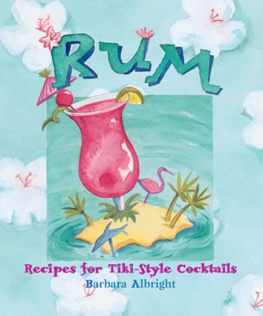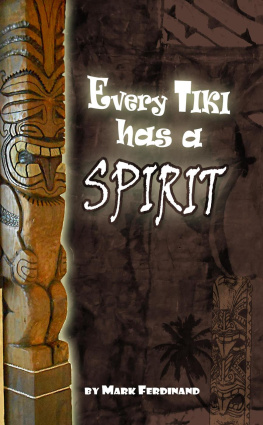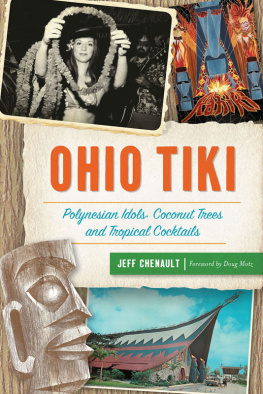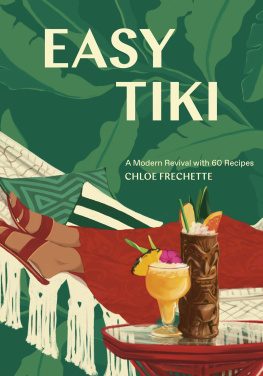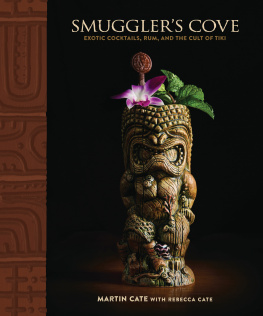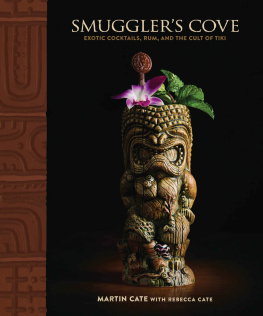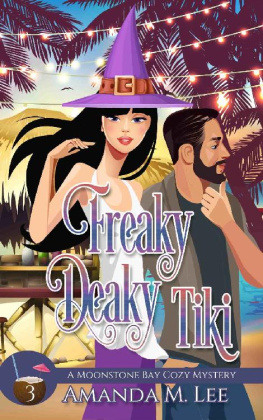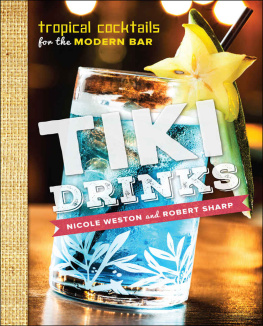Published by The History Press
Charleston, SC
www.historypress.com
Copyright 2018 by Jason Henderson and Adam Foshko
All rights reserved
First published 2018
e-book edition 2018
ISBN 978.1.43966.473.5
Library of Congress Control Number: 2018936071
print edition ISBN 978.1.46713.822.2
Notice: The information in this book is true and complete to the best of our knowledge. It is offered without guarantee on the part of the authors or The History Press. The authors and The History Press disclaim all liability in connection with the use of this book.
All rights reserved. No part of this book may be reproduced or transmitted in any form whatsoever without prior written permission from the publisher except in the case of brief quotations embodied in critical articles and reviews.
Foreword
Discovering California,the Cradle of Polynesian Pop
By Otto von Stroheim
I grew up in Southern California in the 1960s and 70s. I wasnt aware that the roadside playgrounds and the amusement parks next door to where I called home were a new and exciting experience unique to the state of California and formed a state of mind unique to Californians. As a kid I didnt realize that I was living in the golden age of pop culture.
In my childhood world, most houses had tropical landscaping. Almost every front yard had Bird of Paradise bushes, jumbo Elephant Ear plants and banana trees and so did all the restaurants, which were also Space Age themed like Norms and Ships. The Jetsons and The Flintstones were my favorite cartoons, and the world around me reflected their scenerytogether! Googie coffee shops were created in California. The rest of the country had diners that were self-contained in small boxcars, but in California, our diners were like satellites or space ships expanding out into the sky with Las Vegas style lights and signage. This is where I had breakfast with my grandma. I lived one block away from the Golden Arches when I was in kindergarten. If fast food wasnt born in California, it certainly grew up there: Southern California car culture gave rise to a nascent fast food scene that included Taco Bell, Del Taco, A&W Root Beer, Der Wienerschnitzel, Shakeys Pizza, Fosters Old Fashion Freeze and, of course, McDonalds.
When I was young, we didnt go out of the state on vacation much, but we often went to theme parks on the weekend. SoCal was a myriad of theme parks like KNOTTS BERRY FARM offering a glimpse of the Wild West and the cowboys Native American adversary; DISNEYLAND offered a smorgasbord of Americana fantasies; and local amusement parks such as BUSCH GARDENS and PORTS O CALL offered accessible escapism within minutes of my South Bay Torrance and later San Fernando Valley home. Other local theme parks that evoked other worlds and allowed for world travel without leaving your own neighborhood included JAPANESE VILLAGE & DEER PARK and PACIFIC OCEAN PARK in Santa Monica, which blended Exotica and Space Age Modernism with the beach and surf culture of Santa Monica.
Otto von Stroheim, one of the founders of Tiki Oasis, 2017. Jose Lepo.
As if Googie diners, fast food and amusement parks were not enough, California is home to the worlds largest movie industry, Hollywood. From the 1920s to the 1970s, thousands of westerns were shot in the Simi Valley and San Fernando Valley hills, and Batman and Rebel Without a Cause and hundreds of other movies and TV shows were shot in the middle of LA at Griffith Park. Its no wonder that the fantasy islander-themed restaurant and nightclub genre of Tiki style would be born in Hollywood.
The three biggest players in Polynesian restaurants/Tiki bars all came out of California via Hollywood. In 1934, Don the Beachcomber established its fiefdom in Hollywood and then branched out to Chicago and Waikiki. Eventually, Gantt/Beachs enterprise became a far-reaching corporation with over twenty restaurants and a commercial line of drink mixers. Trader Vic soon followed with a franchising deal with Hilton hotels that would put his restaurants around the world, including exotic locales like Amman, Jordan; Dubai, United Arab Emirates; and Mahe Island in the Indian Oceans Seychelles. Of course, a line of Trader Vics drink mixers, blended rum, cooking sauces and condiments followed. Then came actor Stephen Crane expanding his Luau from Beverly Hills to the Sheraton Hotels chain with an upscale concept called Kon Tiki Ports and ten Polynesian restaurants. Cranes Kon Tiki Ports was Chicagos largest restaurant in volume, grossing more than $2.3 million in 1966. (Oddly, that same year Crane felt the Polynesian theme had reached a plateau.) Both Vic and Steve admitted that they learned the Tiki trade from Gantt/Beach, making Donn the creator of the Tiki bar and Hollywood the birthplace.
After the surge of tropical of the 30s and 40s came Hawaii statehood in 1959. In the 1960s, a new generation took the Tiki torch and ran with it into the surf. Surfers wore Tiki god necklaces, used Tiki statues as mascots to guard over their local surf spots and wore Hawaiian shirts in homage to the birthplace of surfing.
Pop culture and Hollywood are heavy influences that gave rise to Polynesian Pop, but another big factor is Californias proximity to Polynesia. At the turn of the century, the only way to get to the ukulele-laden, hula girlinhabited tropical island of Hawaii was by cruise ship. The Matson cruise lines based in San Francisco dominated South Seas travel for decades, carrying passengers to a variety of stops throughout the South Pacific. San Francisco Bays Oakland port is one of the largest ports in the United States, and its also the point on the mainland nearest to Hawaii. (Technically, the nearest point is 120 miles north of SF, but whos counting?) Matson lines also sailed out of the Port of Los Angeles. Los Angeles and the Port of Long Beach are usually ranked one and two as the largest ports in the United States, while Oakland was listed as the number two largest shipping port in the world in the late 1960s.
THE POLYNESIAN POP WAVE ROLLS ON
Los Angeles artist and Tiki enthusiast Jeffrey Vallance identified The Four Generations of Polynesian Pop as the original movement from the 1920s to the 1960s; the second generation, of which Vallance was a prominent figure, took place in late 1970s to early 80s; the third generation (my generation) began in the mid-1990s; and the fourth wave came after the publishing of the books Taboo: The Art of Tiki (1999) and The Book of Tiki (2000) and my zine Tiki News (1995). I would also include the very first edition of The Grog Log, published in 1996 as a photocopied self-release by Beachbum Berry.
With these publications the scene is set. The Book of Tiki provided the history of the Polynesian Pop movement;






